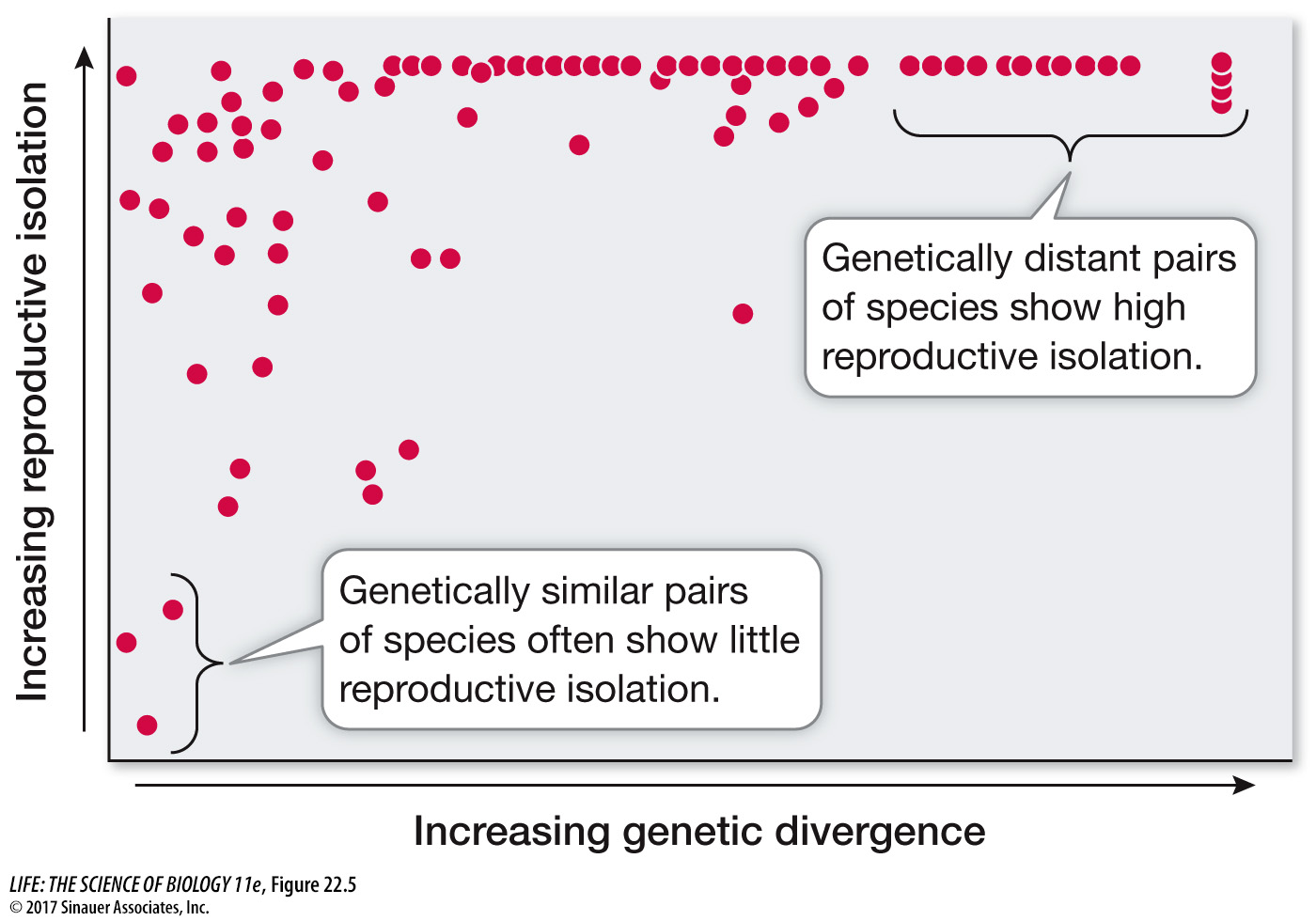Reproductive isolation develops with increasing genetic divergence
As pairs of species diverge genetically, they become increasingly reproductively isolated (Figure 22.5). Both the rate at which reproductive isolation develops and the mechanisms that produce it vary from group to group. Reproductive incompatibility has been shown to develop gradually in many groups of plants, animals, and fungi, reflecting the slow pace at which incompatible genes accumulate in each lineage. In some cases, complete reproductive isolation may take millions of years. In other cases (as with the chromosomal fusions of Rhogeessa described above), reproductive isolation can develop over just a few generations.

Question
Q: Why might some genetically similar species pairs exhibit high levels of reproductive isolation?
471
Partial reproductive isolation has evolved in many strains of plants that have been artificially isolated by humans. In 1835, Thomas Drummond collected seeds of a newly discovered species of phlox in Texas and distributed them to nurseries in Europe. The European nurseries established more than 200 true-